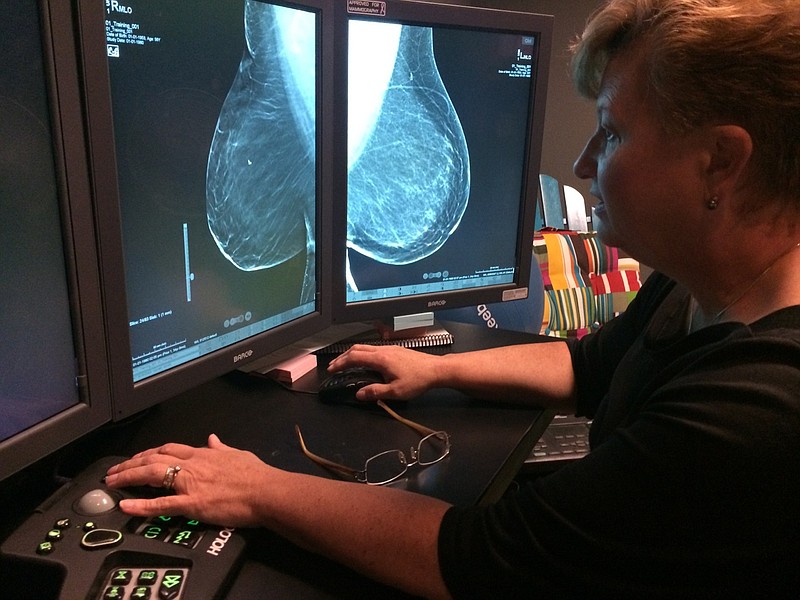Breast surgeons and cancer survivors fear conflicting new recommendations over screening mammography guidelines are confusing providers and putting women at risk.
The American College of Physicians updated its breast cancer screening guidelines in April to recommend average-risk women start getting mammograms at age 50 and be screened every other year.
That move followed in the footsteps of the United States Preventive Services Task Force, which issued the same guidelines, and created an uproar among many breast surgeons who recommend annual mammograms starting at 40. Meanwhile, the American Cancer Society recommends starting at age 45.
Angela Cross of Benton, Tennessee - who was 45 years old when she was diagnosed with breast cancer in 2018 - said cancer could be spreading throughout her body today had her gynecologist not pushed her to get a mammogram.
"I may have eventually felt my tumor, but it would've been much farther along in the disease process by the time I did," she said. "It terrifies me to think we're telling women that it's OK to wait."
In response to the other guidelines, the American Society of Breast Surgeons announced in May its own new guidelines, calling for a risk assessment between ages 25 and 30, annual mammograms at age 40 for women with average risk, and earlier screenings for those at higher risk for the disease. The American College of Radiology agrees with those recommendations.
Later screening recommendations also could disproportionately affect black women, who are more likely to be diagnosed with a more aggressive form of breast cancer at a younger age than white women.
Dr. Nicole Walker, a breast surgical oncologist at CHI Memorial hospital, said the benefit of screening at 40 far outweighs the negatives, since 16% of breast cancers are diagnosed in women between ages 40 and 50. In the center where she practices, they identified 100 women in this category over the last two years, she said.
"You're not talking about single digits that this affects. It makes a big difference in those women if you catch it earlier," Walker said.
She also likes the addition of a risk assessment.
"That's been the first recommendation of this type that I've seen, but I think it's good, because you're trying to identity the patients who are at higher risk," Walker said. High-risk patients may benefit from more advanced screening tools and specialized protocols.
Advocates for later screening say the adverse effects of early screening include cost and the probability of false-positive results that could cause anxiety and unnecessary medical procedures. Proponents of earlier screening say providers should discuss these potential downsides with their patients.
According to Cross, fear or anxiety shouldn't drive our mammography decisions.
"Yes, they may find something, but your life doesn't end there," she said. "Don't be afraid of what it might show, because the earlier they find it they better you'll come out."
Contact staff writer Elizabeth Fite at efite@timesfreepress.com or 423-757-6673.
